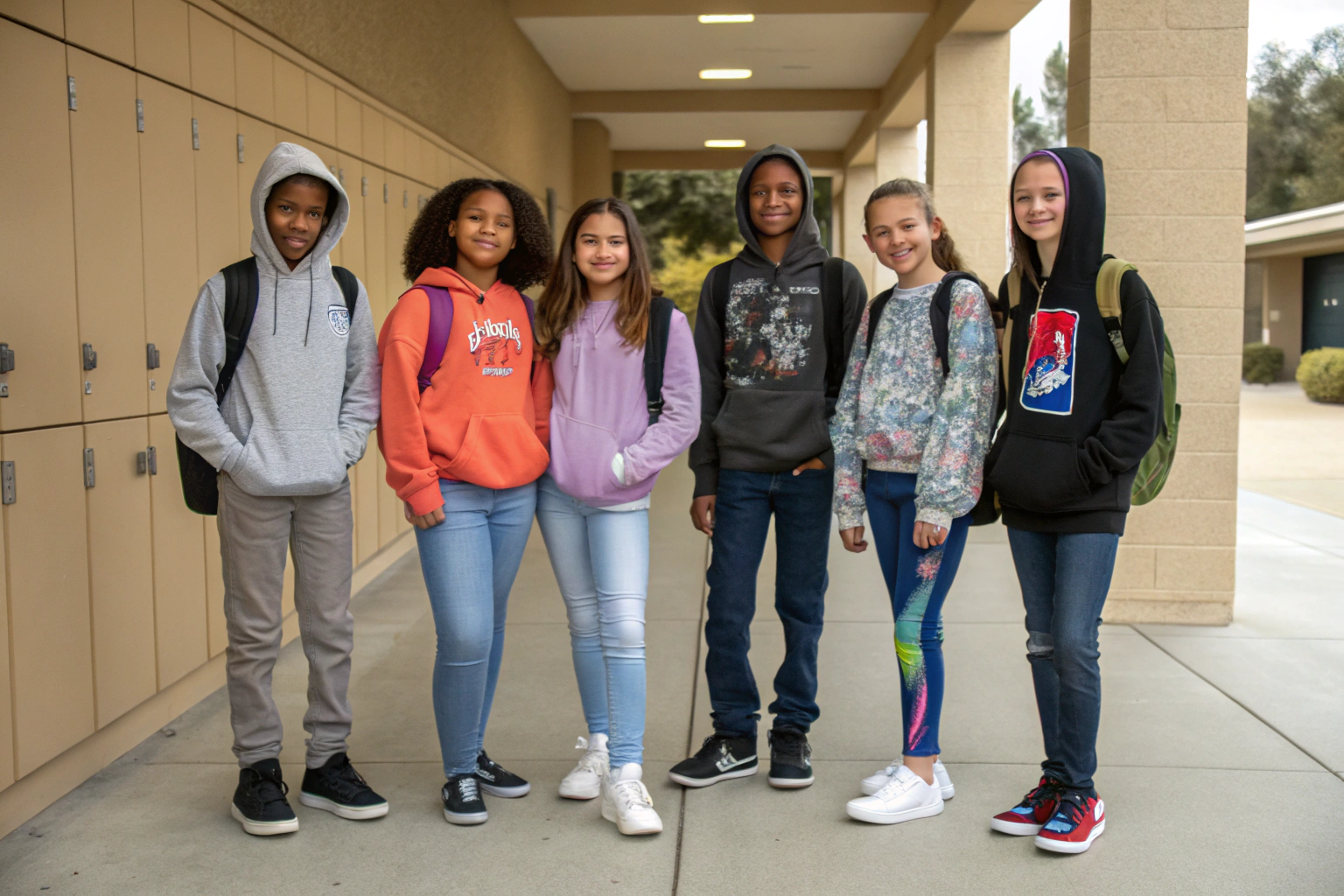Fashion in middle school is more than a personal statement — it’s a reflection of growing independence, social awareness, and the desire to fit in. Whether you’re a parent, educator, or clothing brand, understanding what kids wear during these transitional years helps you better prepare your child or your product line for the real world of tween fashion.
Most middle schoolers wear casual, comfortable clothes with a mix of athletic, trendy, and basic staples. Popular outfits include hoodies, graphic tees, leggings, jeans, sneakers, joggers, and sometimes light outerwear. Style often varies based on region, school dress codes, and peer influence.
Do kids wear uniforms or casual outfits?
This depends on the school. In many U.S. middle schools, students wear casual clothing unless the school enforces a dress code or uniform policy.
Most public middle schools allow casual wear, while private or charter schools may require uniforms. Casual styles reflect personality and comfort, often influenced by current trends, social media, or popular brands.
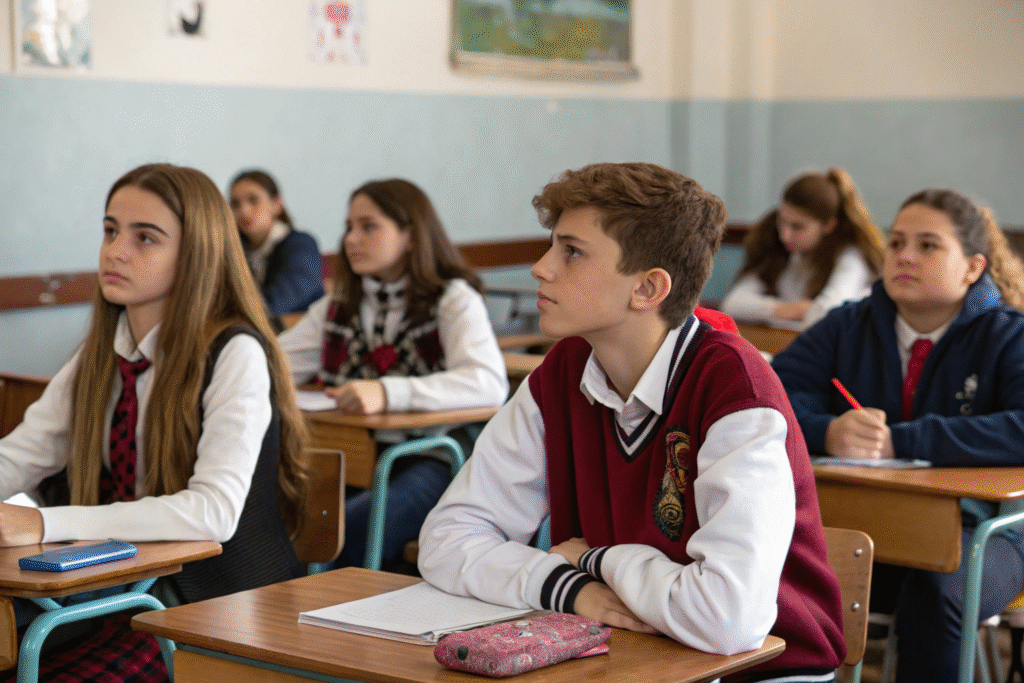
What are common casual dress items?
- Hoodies and zip-ups
- Denim or cargo pants
- Oversized T-shirts or logo tees
- Leggings or joggers for girls
Uniformed schools typically require polo shirts, khaki pants, or plaid skirts — but students often customize with accessories like shoes, backpacks, and jackets.
What are the most popular clothing brands among middle schoolers?
Brand awareness starts to grow quickly in middle school. Students begin forming opinions based on peer approval, social media, and influencers.
Popular brands include Nike, Adidas, Champion, H&M, Shein, and sometimes mid-range labels like Hollister or American Eagle. However, comfort still matters more than logos for many kids.
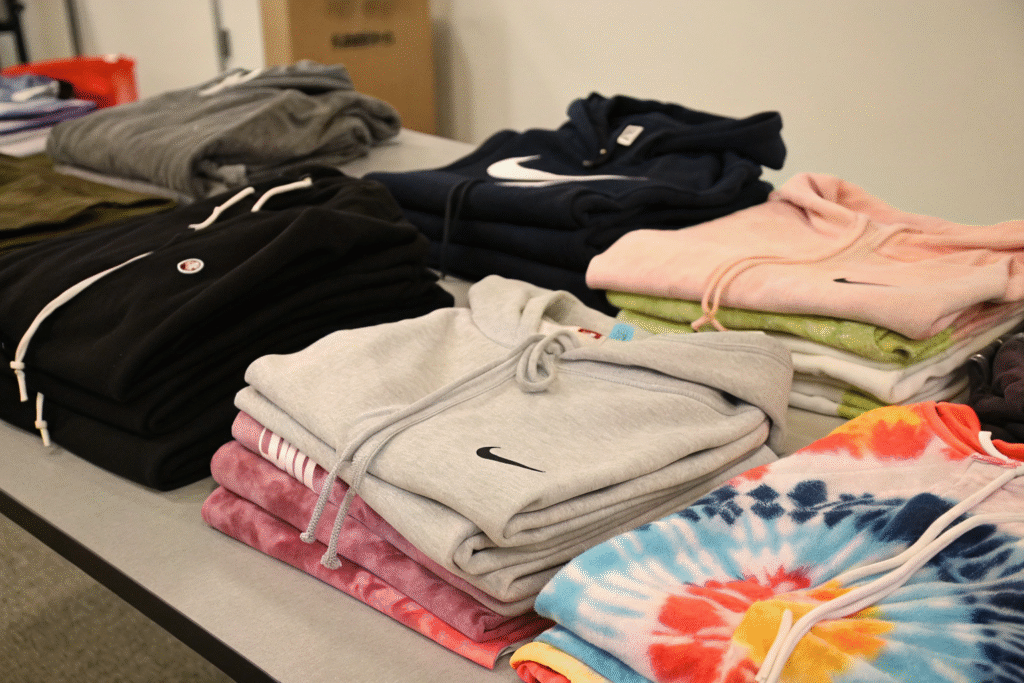
Do kids follow fashion trends closely?
To a degree — especially those with older siblings or TikTok accounts. Trends that gain popularity include:
- Oversized hoodies and sweaters
- Cargo pants and joggers
- Tie-dye or graphic designs
- Matching tracksuits or sets
At Fumao, we help our clients develop youth-focused collections that blend comfort and fashion — especially items like fleece hoodies, cotton sets, and graphic tees.
How does season affect what middle schoolers wear?
Seasonal changes dramatically affect what kids wear — especially if they’re walking to school, involved in sports, or spending time outside.
In warmer months, kids favor shorts, T-shirts, and sneakers. In colder weather, they shift to hoodies, sweatpants, jackets, and boots. Transitional pieces like light zip-ups are worn almost year-round.
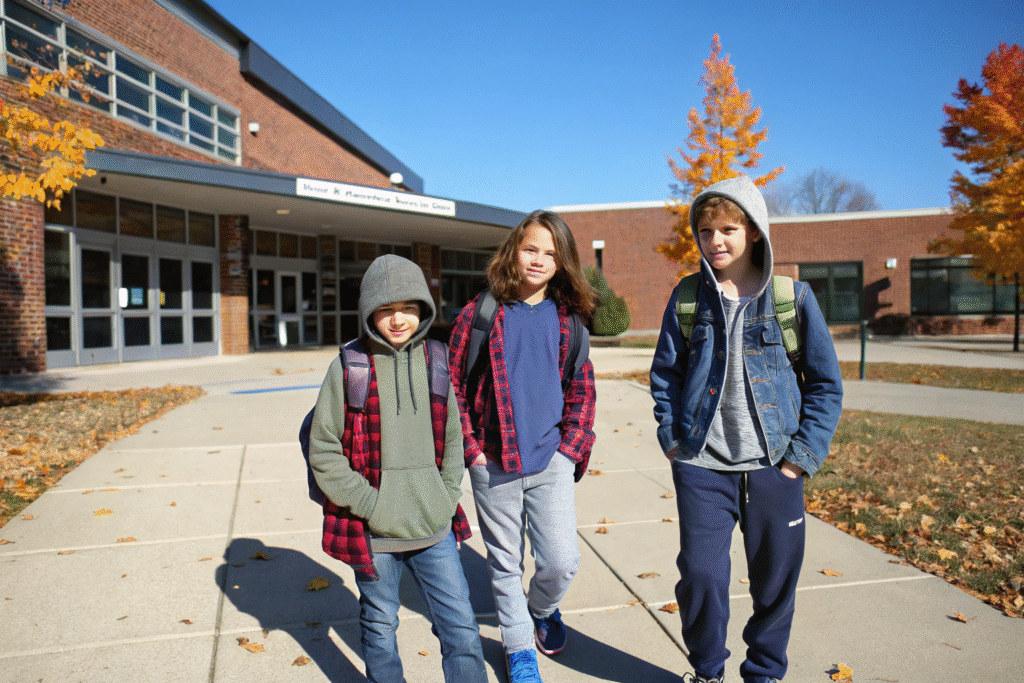
Do kids layer their clothing?
Yes. Layering helps them adjust throughout the day — especially in buildings with varying temperatures. A typical fall outfit might include:
| Item | Example |
|---|---|
| Top Layer | Zip-up hoodie or flannel |
| Base Layer | Cotton T-shirt or thermal |
| Bottom | Jeans or leggings |
| Footwear | Sneakers or low boots |
Brands that offer mix-and-match basics perform well during back-to-school campaigns.
What role does self-expression play in kids’ fashion?
Middle school is when identity starts to develop — and clothing becomes a form of expression. Whether it’s a favorite color, hobby, or music genre, what they wear often signals who they want to be.
Kids begin experimenting with colors, slogans, and silhouettes. Their fashion choices reflect personality — even if it’s within limits set by parents or schools. They also begin to care about trends, peer opinions, and social validation.
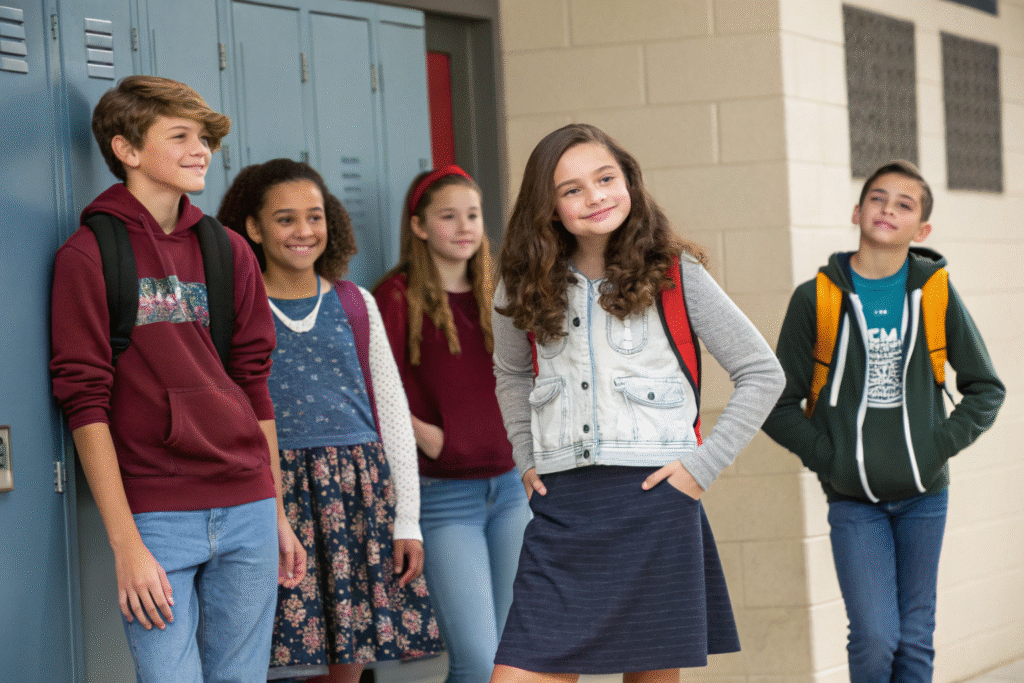
How do parents balance guidance with independence?
Most parents aim for a middle ground — allowing style freedom while ensuring safety, warmth, and school appropriateness. That’s why functional clothing with bold designs or licensed graphics (like sports teams or game characters) is a popular compromise.
Conclusion
Middle schoolers typically wear clothes that blend comfort, trend, and expression. While hoodies, tees, and sneakers remain staples, choices vary by brand access, peer influence, and school policies. Whether your child is dressing for class or you’re developing a kidswear line, understanding this age group’s fashion priorities — comfort, personality, and flexibility — will help you make smarter choices.

